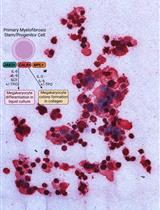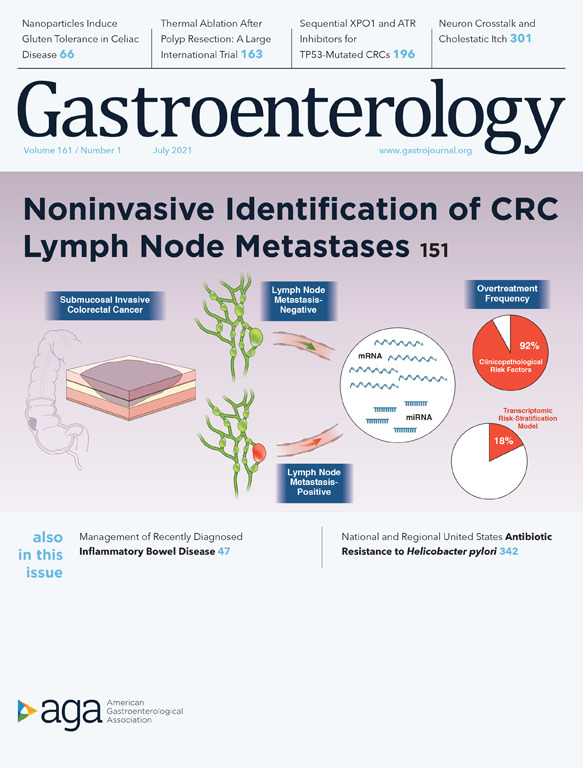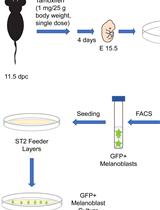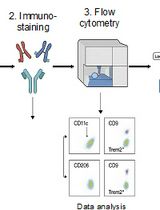- EN - English
- CN - 中文
Isolation and Culturing Primary Cholangiocytes from Mouse Liver
小鼠肝原代胆管细胞的分离与培养
发布: 2021年10月20日第11卷第20期 DOI: 10.21769/BioProtoc.4192 浏览次数: 5604
评审: Masahiro MoritaKomuraiah Myakala

相关实验方案

来自骨髓增生性肿瘤患者的造血祖细胞的血小板生成素不依赖性巨核细胞分化
Chloe A. L. Thompson-Peach [...] Daniel Thomas
2023年01月20日 2178 阅读
Abstract
Cholangiocytes are epithelial cells lining the intrahepatic and extrahepatic bile ducts. Cholangiocytes perform key physiological functions in the liver. Bile synthesized by hepatocytes is secreted into bile canaliculi, further stored in the gallbladder, and finally discharged into the duodenum. Due to liver injury, biliary epithelial proliferate in response to endogenous or exogenous signals leading to cholangiopathies, inflammation, fibrosis, and cholangiocarcinoma. Cholangiocytes exhibit anatomical and functional heterogeneity, and understanding such diversified functions will potentially help in finding effective therapies for various cholestatic liver diseases. To perform such functional studies, effective cholangiocyte isolation and culture procedures are needed. This protocol will aid in easy isolation and expansion of cholangiocytes from the liver.
Keywords: Cholangiocytes (胆管细胞)Background
The liver is structurally and functionally heterogeneous. It performs vital functions like the uptake of cholesterol; amino acid, lipid, and vitamin metabolism; and the production of albumin and blood clotting factors. The liver is composed of parenchymal and non-parenchymal cells, of which hepatocytes form a major portion; other cells present include biliary epithelial cells (cholangiocytes), stellate cells, liver sinusoidal endothelial cells, and various immune cell subsets (Zorn, 2008). Liver sinusoidal endothelial cells form a lining between the blood in the sinusoidal space and underlying hepatocytes, forming the space of Disse. Liver lobules are functional units that have a central vein from which hepatocyte cords arise and are separated into sinusoids carrying blood from the portal triad to the central vein. Portal triads are composed of the hepatic artery, bile duct, and portal vein. Bile ducts are lined by epithelial cells called cholangiocytes (Malarkey et al., 2005; Gordillo et al., 2015), as shown in Figure 1. The biliary epithelium primarily acts as a lining conduit for bile flow, but it also modifies canalicular bile and concentrates bile in the gall bladder. Biliary epithelia are “effective communicators” with neighboring cells in producing mediators that are involved in cell growth and injury response (Chen et al., 2008). Many risk factors, including genetic mutations, immune-mediated damage, idiopathic factors, infectious agents including viruses, and vascular defects, can modify cholangiocyte physiology, resulting in altered bile transport leading to cholestasis, which further induces inflammation, fibrosis, and end-stage liver cirrhosis (Alvaro et al., 2007; Sebode et al., 2014; Asai et al., 2015; Miethke et al., 2016; Carey et al., 2017; Pinto et al., 2018; Taylor et al., 2018; Banales et al., 2019; Pham et al., 2021).

Figure 1. Architecture of the liver. The liver is composed of functional units called lobules. Lobules consist of portal triads containing a bile duct, hepatic artery, and portal vein. Lobules have hepatic cords with a number of sinusoids. Cholangiocytes form a lining around the bile ducts. Adapted from Gordillo et al. (2015).
Disorders of the extrahepatic bile duct cause increased susceptibility to morbidity and mortality. Biliary atresia, primary sclerosing cholangitis, cystic fibrosis, Alagille’s syndrome, and primary biliary cirrhosis are some of the well documented cholangiopathies affecting both neonates and elderly patients. About 70% of pediatric liver transplants are performed to treat biliary atresia, while 5% of liver transplantations are done in patients with primary sclerosing cholangitis (PSC) (Kelly and Davenport, 2007; Wunsch et al., 2014; Govindarajan, 2016; Lazaridis and LaRusso, 2016; Fickert and Wagner, 2017; Dyson et al., 2018; Shah et al., 2020). However, the exact etiology or the factors that mediate biliary injury in some patients are still unknown. The susceptibility of these patients can be better understood using murine models and cholangiocytes isolated from these models through in vitro experiments. However, the culture of primary biliary epithelial cells remains challenging. This protocol will help facilitate the isolation and expansion of native cholangiocytes, which can be further used for downstream applications.
Materials and Reagents
100 µm nylon mesh (Greiner Bio-One, catalog number: 542000)
50 ml syringe (BD, Catalog number: 309653)
50 ml tubes (Greiner Bio-One, catalog number: 227270)
15 ml tubes (Greiner Bio-One, catalog number: 188261)
5 ml pipette (Greiner Bio-One, catalog number: 606180)
48-well plates (Fisher Scientific, catalog number: 08-772-1C)
T-25 and T-75 flasks (Greiner Bio-One, catalog numbers: 1186Q51 and 658175)
Pasteur pipet (Fisher, catalog number: 1367820D)
Dexamethasone (400 μg/ml) (Sigma, catalog number: D4902)
3,3’,5-Triiodo-L-thyronine (3.4 mg/ml) (Sigma, catalog number: T6397)
Forskolin (0.411 mg/ml) (Sigma, catalog number: F3917)
mEGF (10μg/ml) (Peprotech, catalog number: 315-09)
ITS (100×) (Corning Cellgro ITS, catalog number: MT25800CR)
L-glutamine (100×) (Gibco Life Technologies, catalog number: 102374)
Pen/Strep (100×) (Thermo Fisher Scientific, catalog number: 15070063)
MEM-NEAA (100×) (Gibco, catalog number: 11140050)
EpCam G8.8 Antibody (University of Iowa Hybridoma bank)
Percoll (GE Healthcare, catalog number: 17089101)
PBS (Fisher, catalog number: 14190250)
Hyaluronidase (Sigma-Aldrich, catalog number: H3506)
Collagenase D (Sigma-Aldrich, catalog number: 11088882001)
EpCam (murine) (CD326, G8.8; DSHB, https://dshb.biology.uiowa.edu/G8-8)
Sheep Anti-Rat IgG Dynabeads (Thermo Fisher Scientific, catalog number: 11035)
DMEM w/ F12 (Gibco, catalog number: 11320033)
MEM-NEAA (Gibco, catalog number: 11140050)
Triiodothyronine (Sigma-Aldrich, catalog number: T6397)
PierceTM BCA Protein Assay Kit (Thermo Fisher Scientific, catalog number: 23227)
Rat anti-mouse CK19 IgG, Troma III (CK19) (DSHB, https://dshb.biology.uiowa.edu/TROMA-III)
Goat anti Rat antibody (Invitrogen, Fisher Scientific, catalog number: PI31470)
Donkey anti-Mouse IgG Secondary Antibody IRDye 800CW LI-COR (Biosciences, catalog number: 926-32212)
DNase I (Roche, catalog number: 4716728001)
Release Buffer (Thermo Fisher Scientific)
EasySepTM Release Mouse PE Positive Selection Kit (Stem Cell Technology, catalog number: 17656)
PE anti-mouse CD326 (Ep-CAM), Antibody (Biolegend, catalog number: 118206)
DMEM w/ F1 (Gibco, catalog number: 11320033)
FBS (Thermo Fisher Scientific, catalog number: A4766801)
Chemically defined Lipid Concentrate (100×) (Gibco, catalog number: 11905031)
Gentamicin (50 mg/ml) (Gibco, catalog number: 15750-060)
MEM Vitamin Solution (100×) (Gibco, catalog number: 11120052)
Glacial acetic acid (Fisher Scientific, catalog number: A38S-500)
Pierce BCA Protein Assay Kit (Thermo Scientific, catalog number: PI23235)
β-actin (Sigma-Aldrich, catalog number: A5441)
Pierce Fast Western Blot Kit, ECL Substrate (Thermo Scientific, catalog number: 35055)
Donkey anti-mouse IgG IRDye 800CW (LI-COR Biosciences, catalog number: 926-32212)
Horseradish peroxidase (Fisher Scientific, catalog number: PI31470)
Odyssey system (LI-COR) (https://www.licor.com/bio/odyssey-clx/)
DPBS (Fisher, catalog number: 14190 250)
Rat Tail Collagen Coating Solution (20 ml) (Cell Applications, catalog number: 122-20)
Media for digestion/Perfusion
Perfusing media (see Recipes)
Digestion media (see Recipes)
Isolation buffer (see Recipes)
Dexamethasone (400 μg/ml) (see Recipes)
3,3’,5-Triiodo-L-thyronine (3.4 mg/ml) (see Recipes)
Forskolin (0.411 mg/ml) (see Recipes)
mEGF (10 μg/ml) (see Recipes)
Collagen coating (see Recipes)
Equipment
Hemocytometer (Sigma, catalog number: Z359629-1EA)
Centrifuge (Eppendorf, catalog number: EP-5810S)
Rotator (Cambridge Scientific, catalog number: 17847)
Forceps and scalpel (Fine Science Tools, catalog number: 11075-00; VWR, catalog number: 4-422)
Shaker (Eppendorf, catalog number: M1352-0000)
BD Accuri C6 flow cytometer (BD Biosciences)
BD LSRFortessa Cell Analyzer (BD Biosciences, https://www.bdbiosciences.com/en-in/products/instruments/flow-cytometers/research-cell-analyzers/bd-lsrfortessa)
Bio-Rad ChemiDocTM MP Imaging System
Software
FlowJo software (version 10.7.1; Tree Star, Inc., Ashland, OR)
Procedure
文章信息
版权信息
© 2021 The Authors; exclusive licensee Bio-protocol LLC.
如何引用
Kudira, R., Sharma, B. K., Mullen, M., Mohanty, S. K., Donnelly, B., Tiao, G. M. and Miethke, A. (2021). Isolation and Culturing Primary Cholangiocytes from Mouse Liver. Bio-protocol 11(20): e4192. DOI: 10.21769/BioProtoc.4192.
分类
发育生物学 > 细胞生长和命运决定 > 再生
免疫学 > 动物模型 > 小鼠
细胞生物学 > 细胞分离和培养 > 细胞分离 > 流式细胞术
您对这篇实验方法有问题吗?
在此处发布您的问题,我们将邀请本文作者来回答。同时,我们会将您的问题发布到Bio-protocol Exchange,以便寻求社区成员的帮助。
提问指南
+ 问题描述
写下详细的问题描述,包括所有有助于他人回答您问题的信息(例如实验过程、条件和相关图像等)。
Share
Bluesky
X
Copy link











